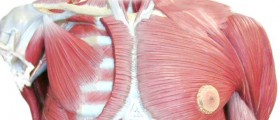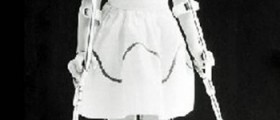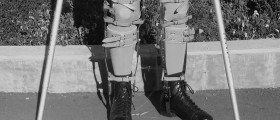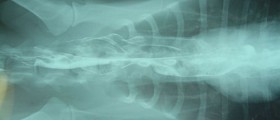
Spinal muscular atrophy (SMA) is a genetic disorder which leads to progressive weakening of muscles and their degeneration (atrophy). The very condition is responsible for damaging nerve cells (to be more precise motor neurons) in the spinal cord. These nerve cells are essential for transmitting nerve impulses to voluntary muscles, the ones we can move by our own will. This explains why damage to such muscles affects movement of muscles people used to have control over. The affected muscles become weak and eventually succumb atrophy.
How Dangerous is SMA
Since neck muscles play a significant role in many functions, among which the most important ones are breathing, swallowing, support of the head and neck etc. slow progression of the condition eventually leads to inevitable end - lethal outcome.
Spinal muscular atrophy runs in families. Parents do not have to be ill, but they carry the defective gene which can be easily transmitted to their child. This is why such individuals should undergo genetic counseling prior considering having a baby.
Spinal Muscular Atrophy Clinical Characteristics
There are four types of spinal muscular atrophy. All of them have one thing in common- muscle weakness accompanied by muscle atrophy.
Clinical characteristics of spinal muscular atrophy generally depend on its severity as well as the age of disease onset. Most symptoms of the condition are actually secondary complication of muscle weakness and atrophy.
Infantile Spinal Muscular Atrophy
The most severe form of the disease is infantile spinal muscular atrophy. It is characterized by muscle weakness and poor muscle tone, weak cry, weak cough, limpness and a tendency to flop, difficulty sucking or swallowing. Furthermore, such children are prone to accumulation of secretions in the throat or lungs. Their torso is bell-shaped, fists clenched, head tilted to one side and legs lying in the 'frogs leg' position. The legs are, in general, weaker comparing to upper extremities. The condition is closely related to feeding difficulties, increased susceptibility to respiratory infections, bowel and bladder weakness. All in all, there are numerous developmental milestones. Spinal Muscular Atrophy Treatment
Unfortunately, since this is a genetic disorder caused by damage to some genes, it simply cannot be cured. There is no way to fix impaired genes. The treatment for spinal muscular atrophy is, therefore, symptomatic.
It is essential to teach patients (older children) breathing techniques and respiratory exercises. Poor feeding is dealt with a gastronomy tube. Physiotherapy may improve the posture to certain extent. Additional help is obtained from a corset or back brace. In some children spine deformities are corrected surgically. Finally, the child is supposed to work with occupational therapist.
















Your thoughts on this
Loading...